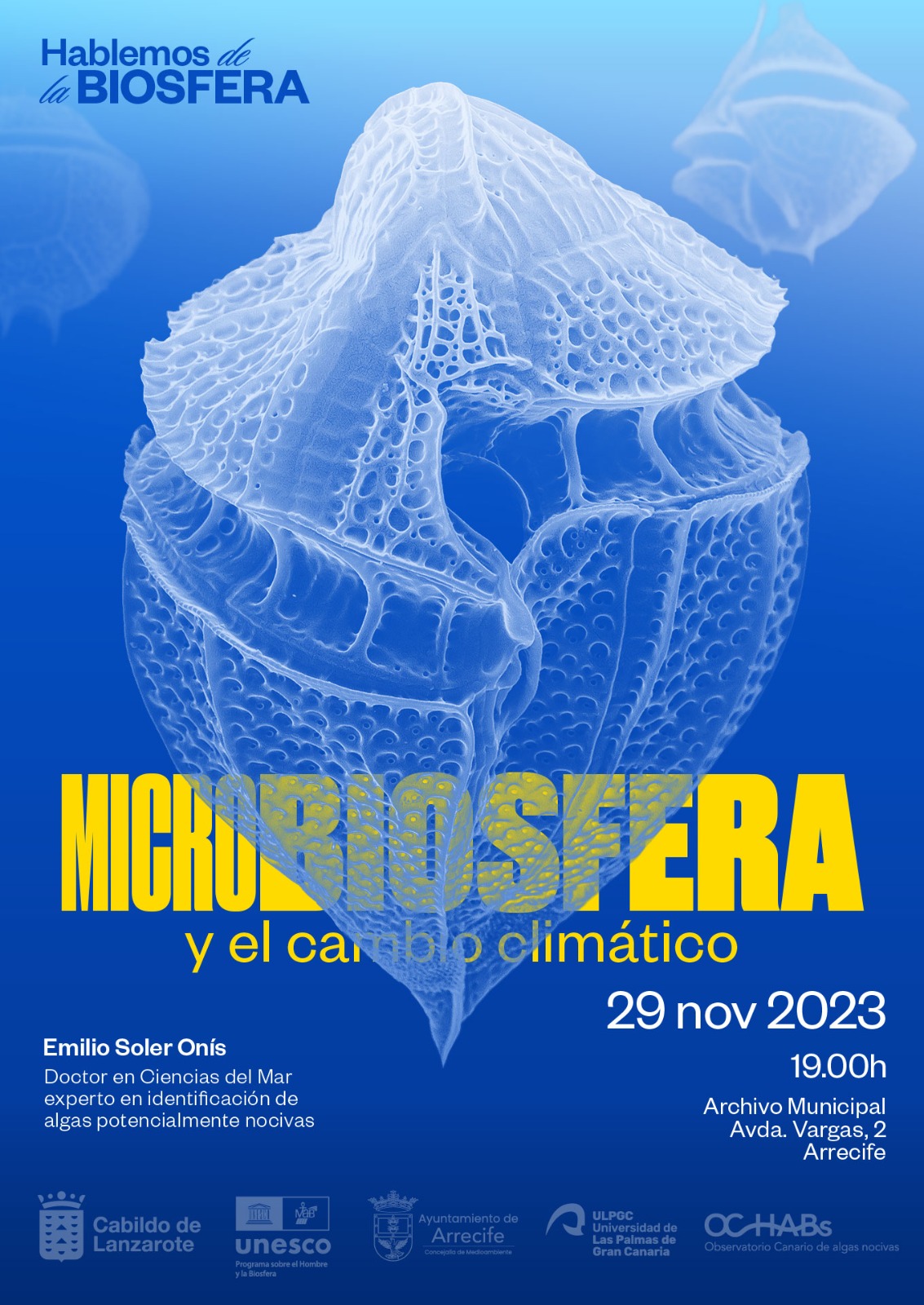The lecture by Emilio Soler Onís, from the EOMAR group of the ECOAQUA Institute, will be held on November 29th at 7 pm at the Municipal Archives of Arrecife.
In the last two decades, the warming of seawater and human pressure have had notable consequences on the ecosystems of the Canary Islands, especially on the coastal communities of macro and microalgae that define the coastal landscape, with sometimes disastrous effects on the environment, public health, aquaculture and tourism.
The Lanzarote Biosphere Reserve, department directed by Samuel Martín, will address the environmental impact of this proliferation of marine blooms with the help of Emilio Soler Onís, researcher of the EOMAR Group of the ECOAQUA Institute and PhD in Marine Sciences from the University of Las Palmas de Gran Canaria (ULPGC) and expert in the identification of potentially harmful algae.
His lecture “Lanzarote’s Microbiosphere and Climate Change” will introduce the audience to the causes of the natural phenomenon of massive microalgae growths and the invisible diversity of the Lanzarote Biosphere Reserve, composed of unique organisms that have shaped the surface and atmosphere of the planet over billions of years.
The lecture, with free access until full capacity is reached and broadcast via streaming, will be held on November 29 at 7 pm at the Municipal Archives of Arrecife, as part of the program “Let’s talk about the Biosphere”. It has the collaboration of the Department of Environment of the City of Arrecife and the Canary Observatory of Harmful Algae of the ULPGC.
The lecturer
Emilio Soler Onís holds a PhD in Marine Sciences from the University of Las Palmas de Gran Canaria, accredited by the IOC-UNESCO (Intergovernmental Oceanographic Commission- UNESCO) as an expert in identification of potentially harmful algae. Taxonomist and researcher from the Spanish Bank of Algae between 2001 and 2019.
He has 30 years of experience in the field of Marine Botany and Phycology and 58 publications on deep-sea red algae, cyanobacteria, diatoms, dinoflagellates, HABs and Paleoclimate. He is currently a part of the EOMAR research group of the ECOAQUA Institute of the University of Las Palmas de Gran Canaria and develops his scientific work as a doctoral researcher at the Canary Observatory of Harmful Algae of the Fundación Canaria Parque Científico Tecnológico of the ULPGC.
Source: Biosphere Reserve of the Cabildo Insular of Lanzarote


